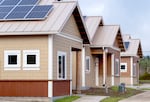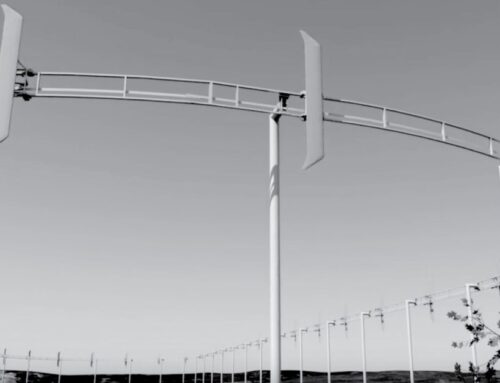Microgrids a step closer to reality for Oregon communities
June 26, 2025
Communities across Oregon are a step closer to being allowed to generate, distribute and own their own energy sources, after two bills aimed at creating a framework for community-owned microgrids were approved by lawmakers.
Microgrids are small, self-contained energy networks, usually powered by wind and solar technology, that produce, distribute and store power locally. Microgrids are usually connected to a utility, but can disconnect and function independently — or they can provide energy to the local electric utility through their battery storage systems when needed.
Currently, Oregon does not have any community-owned microgrids, but renewable energy pilot projects have popped up, testing the concept. Portland General Electric is piloting a small-scale microgrid with about 500 homes and businesses in southeast Salem.
Community resilience hubs, which provide shelter and resources during extreme weather events, can also qualify as microgrids.

On Tuesday, Oregon’s Legislature approved two bills, House Bill 2065 and House Bill 2066, that opened the doors for community-owned microgrids. They could increase renewable energy development in the state, provide grid resilience and reliability, and relieve pressure on transmission power lines.
“Microgrids are critical for energy resilience, particularly in rural communities that are vulnerable to grid disturbances,” Joshua Basofin, clean energy program director with nonprofit Climate Solutions, said in a statement.
“Microgrids can utilize local energy sources, adding energy capacity during normal conditions while allowing communities to keep critical infrastructure like businesses, schools, and hospitals operating during an emergency,” Basofin said.
House Bill 2066 will require the Oregon Public Utility Commission to create a roadmap for building, owning and valuing microgrids in Oregon.
Dylan Kruse, president of environmental nonprofit Sustainable Northwest, said microgrids can keep communities connected as the state experiences more wildfires, heat waves and snowstorms that lead to power outages.
“We’re seeing challenges with the grid,” he said. “It’s impacting communities and we’re seeing a lot more of these outages and they are looking for alternatives to say, ‘Look, if the lights are going to go off, we’ve got to have some options here’.”
Up until now, Kruse said, it’s been unclear who can develop, own and operate a microgrid in Oregon. He’s hopeful that the Oregon Public Utility Commission can set up a clear framework for utilities and communities interested in owning a microgrid.
Microgrids can strengthen the transmission grid, as well, by providing relief during peak hours, when energy is in high demand, and by boosting reliability when there is a power outage.
They can also relieve pressure on the transmission grid, which is strained by growing electricity use by homes and businesses, including the surge in power-guzzling data centers.
Earlier this month, the U.S. Department of Energy Office of Electricity announced more than $8 million will go toward 14 microgrid projects in remote areas across the country.
House Bill 2065 will help relieve the bottleneck slowing development of renewable energy projects, Kruse said.
“Utilities don’t have enough people to do the engineering and the interconnection studies to bring more of those projects online,” he said. “This would allow for communities and developers to work with qualified third-party engineers to do those studies so we can get more clean energy projects online faster and meet our state’s renewable goals.”
Overall, Kruse said, there needs to be an “all of the above” approach to ensure residents are connected to power and stay connected, especially during extreme weather. For example, Kruse said communities in Southern Oregon have experienced dozens of power outages due to wildfires.
“Microgrids are an important strategy as part of building more resilience in our system and another tool in our toolbox to help us meet those clean energy goals to provide reliable sources of energy and power to communities,” he said.
Despite Portland General Electric’s microgrid pilot, the utility, along with Pacific Power, opposed both bills. PGE said it already works with public partners to operate microgrids. The company also said HB 2065 would duplicate work utilities already do and could be costly for ratepayers.
Overall, the utilities said there could be safety risks by allowing a third party to operate the utility infrastructure, and said microgrids could impact customers’ rates.
House Bill 2065 and House Bill 2066 now head to Oregon Gov. Tina Kotek’s desk for her signature.
Search
RECENT PRESS RELEASES
Related Post



